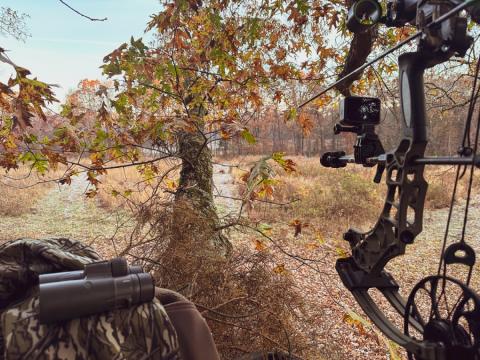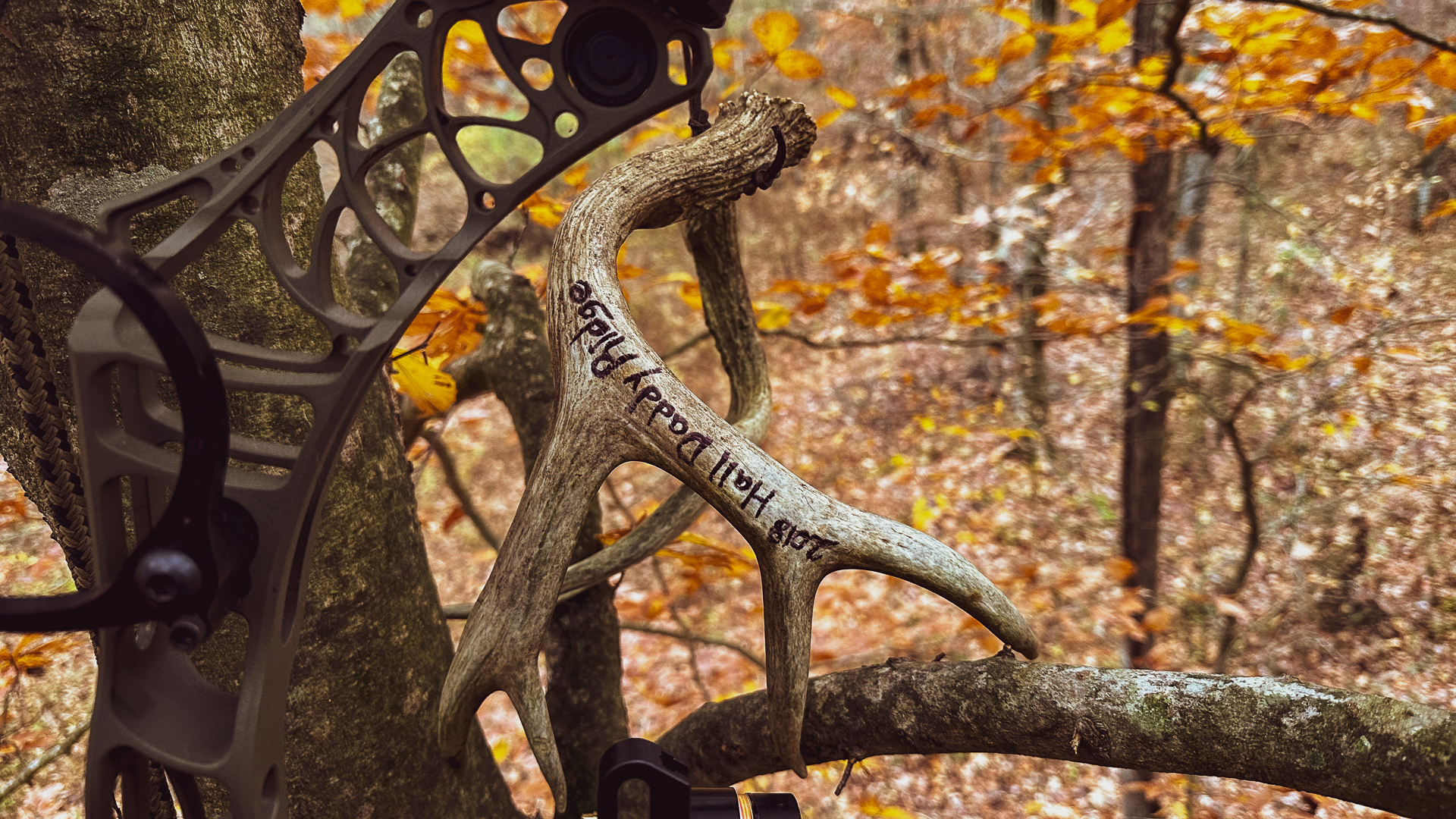Dana R. Rogers | Originally published in GameKeepers: Farming for Wildlife Magazine. To subscribe, click here.

Many gamekeepers try to take a holistic approach to our properties, wildlife management and the arrangement of habitats we all strive to improve. In the upper Great Plains that I consider to be “my neck of the woods,” the single most limiting factor is often cover. Since the late 1800s when settlers first homesteaded the great prairie, the horse-drawn moldboard plow and generations of later farming practices all but wiped out what once was a sea of tall and short- prairie grass from central Canada all the way down to the Texas Panhandle. The area from the eastern slope of the Rockies, east to many areas near the Mississippi River was once home to millions of bison, elk, pronghorn, wild sheep and mule deer. Now it’s a far different habitat.
The open landscape is now mostly crop fields or old pastures of fescue, brome or other cool season grasses planted for livestock grazing. Areas of thick cover are mostly relegated to riparian waterways, erosion ditches or sloughs that unless dry are suited more for waterfowl than deer or upland game birds. That lack of cover severely impacts fawning cover, nesting shelter and during the cold months any type of thermal cover.
Winter in the northern plains can be brutal. The same can be said for many habitats north of the Mason Dixon line to the east as well. I’m going to focus on Great Plains habitat improvements here, but planting Native Warm Season Grasses (NWSG) can be a viable habitat improvement option in many locations. Oftentimes temperatures can remain below zero for days with wind always being a factor on the open prairie.
So what is a gamekeeper to do when most of the landscape is devoid of cover? Food plots are awesome but unless you have security and nesting cover, or places for wildlife to hide and thrive there won’t be anything around to eat the food you’ve provided. Sure you might get some deer or game birds to come feed in those areas but they won’t stay without shelter. You can provide shelter and structure with many plantings. Some, such as corn, sorghum, Sudan grass and Egyptian wheat do provide screening and a bit of wind protection as well as a great food source. Those are annual plantings though and with corn, they can be costly options.
Another option is to plant trees, bushes and shrubs, and that will help, but 5 to10 years down the line. I plant the grains and a few seedlings every year, but I’ve found another option that is longer lasting and much quicker to establish.
Security, fawning, nesting and winter thermal cover is absolutely critical. Protection from hunters, weather, predators and screens from would-be poachers or trespassers can all be provided by putting in a few acres of NWSG. Trees and other long term deciduous and coniferous plants and brush are important, but if you need something sooner that will also yield food, there is no better planting than a tall stand of diverse native grasses mixed with forbs, in my opinion.
Eleven years ago I started managing my home farm and ranch for quality whitetail deer and upland birds for my family to enjoy. The NRCS allowed me to plant 10% of the acreage devoted to their program into food plots at that time, so I got pretty eager and broke up as much sod as I could in places I could fence off from cattle near the already existing trees on one of our ranch pastures. Several years later the NRCS wanted me to limit the food plots on the easement so I needed to return some of the broken sod back into some form of grass. I had long planned to do this with a few acres anyway, to improve pheasant nesting cover and whitetail bedding. An added benefit was that I had a problem with road hunting and poaching from along a county road. The plan was to establish some form of screening cover along that gravel road to help block some of the ‘looky-loo’s’ and/or potential poaching and trespassing activities from the nefarious sort. I transitioned about 20 acres from food plots to a thick, tall and beautiful bedding and feeding area that not only warms the deer, but provides food and shelter from the elements and predators...including road hunters. An added benefit is it's a boon for upland game like our pheasants and cottontail rabbits.
Where to Begin?
If I had it all to do over again, I would transition to a blend of NWSG “AFTER” two years of Roundup Ready Soybeans. This would keep weed control issues at a minimum as well as field “trash.” In the situation I was in, I had planted several varieties of different food plots into a 5 acre and 15 acre area over the previous 6 years. Due to the NRCS requiring a transition back from a 10% to 5% food plot compatible use easement, I had to do it that year.
The prior year, I had planted Sunflowers and I had not been there that summer to use mechanical or chemical weed control measures on these 20 acres. Thus, I had a ton of weeds. Now, I like weeds in my plots to a point…just not too many to overwhelm the desired food source and certainly not noxious weeds. The result was that in preparation of drilling the NWSG mix in May, I disked the plot. That caused a flush of new weeds that I had to try and get a handle on. There are a variety of pre and post emergent herbicides that can be used, but due to my time constraints I simply sprayed 2,4-D twice that summer after drilling in the seed. Had I been able to get the time I would have sprayed atrazine and a glyphosate based product like Roundup to prevent emergence of more weed competition and kill off that first flush of new weed growth 2-3 weeks after the disking.
I was fortunate to have access to a Great Plains 1206 no-till drill. That was my first saving grace, that and the fact I had farmed it for wildlife purposes the preceding several years. So there was no sod thatch and the soil had been worked well over the preceding years. I put myself behind the curve as far as weed control that first year but the planting method and variety were in my favor. The seedbed had been worked but I had to let it settle and I packed it some to get the firm seedbed that native grasses require. The firm bed helps to conserve moisture and good seed to soil contact that is critical for germination. A good rule of thumb I’ve used is that a seedbed is “firm enough for planting” when my boot impression only penetrates about a ½ inch.
Seeding rates for native grasses vary based on environmental factors and species. For wildlife purposes thinner stands are often recommended to allow for openings for birds and animals to move and hide in between these “bunch grasses.” I planted at 6 to 7 pounds of pure live seed with a mix of Big Bluestem, Switch Grass and Indian Grass. On my next planting I will back off on that rate and go to 4 to 6 pounds of pure live seed per acre. If your planting is being established as part of a Natural Resources Conservation easement program, you’ll need to talk to them for specific guidance. They often want at least one forb and some wildflower pollinators in those mixes.
I created my two NWSG planting sites in a grass only stand, but I would highly recommend at least some component of native forb seed be added the seed mix to enhance plant diversity and create additional food sources. The only downside to having done that would be some limitations on herbicide products available for weed control during the initial establishment. Herbicide products that control broadleaf weeds, especially those containing 2,4-D will severely damage most forbs and I was set on using 2,4-D as my post-emergence weed control method.
Using the Great Plains drill I set my pressure wheels fairly heavy to account for my not packing as much as I should have previously. I set my depth at ¼” and waited until the soil temperatures were constantly over 50 degrees. In our area of South Dakota a spring planting was the best option. I wanted to do it once the soil temperature was high enough, but not so late that I already had too much warmth that would create more summer weed competition.
You can do a fall planting or dormant seeding but then you risk a germination loss due to frost heaving or seed loss to wildlife. If you are going to do a fall/dormant seeding the NRCS recommends that it be at a depth close to 2 inches and when the soil is less than 50 degrees.
The no-till drill is the best way to plant these tiny seeds. The Indian grass and bluestem grass being “fluffy” seeds, they require an agitator to continually cycle to move the seed in the box down the tubes. If you don’t have access to a no-till drill with an agitator, check your local NRCS or a local chapter of a conservation organization such as Pheasants Forever, they may have one you can rent. I also have a few friends that have successfully frost-seeded switch grass with a hand held spreader, but those stands are often spotty.
NWSG stands provide great nesting and bedding, food and shelter areas for wildlife. They offer great structure as well as travel lanes under that tall cover for small bird and mammal movement. The species I planted were mostly about 1 foot tall the end of that first summer as they spent the first growing season establishing those deep droughttolerant root systems they are known for. Once the second year’s growing season concluded I had a lush stand between 5 and 6 ½ feet tall and it was an oasis of cover.
Where the previous stands of brome grass would lie flat after the first good snow of the fall, these grasses resist lodging and furnish important ground cover throughout the winter. In addition to plant parts and seeds that provide feed, insect populations concentrate in these areas supplying another food source for many species. We’ve not only seen an increase of thermal bedding cover for the local whitetails, we’ve seen an explosion of cotton tail rabbits as well as some of the best pheasant nesting and roosting habitat for miles.

Now in the 4th year of the stand I am ready to do some maintenance. You can graze, mow at different times of the season (between 6 and 12 inches) but the best method of managing NWSG stands has to be a good controlled/prescribed burn. That should be cautioned by consulting a professional or someone with experience in controlled burns, as well as ensuring it’s before (or after) the nesting and fawning seasons have concluded.
I am thrilled with the mix of Big Bluestem, Indian Grass and Switchgrass I planted. I’ve now got 20 acres of thick thermal cover next to our stand of trees and food plots and it’s given another option for the wildlife. I used to provide a fairly tall screen of cover along a gravel road to deter poaching and the added benefits to the wildlife are quite numerous. If you’d like to add as much cover for bedding, nesting and screening as quickly as you possibly can, I can’t think of another perennial planting that can compete with a lush stand of NWSG.































